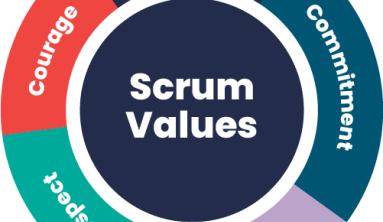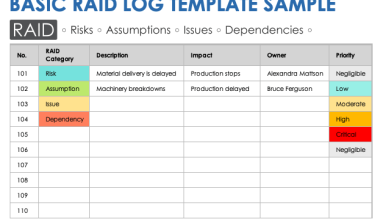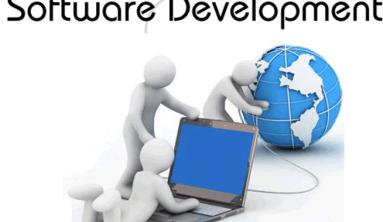
When it comes to estimating the requirements on your Agile projects, there are three different “Sizing Units” that can be used to determine the size (referring here specifically to “Level of Effort”) of your Agile project requirements (referring here specifically to “user stories”), and the specific tasks to meet those requirements. Which of the Following is not recognized as a “unit” that can be used for estimating the size of the requirements on your Agile project?
A) Real time
B) Relative size
C) Ideal time
D) Ideal size
Correct Answer: D
"When it comes to estimating the effort to complete the requirements on your Agile projects, there are three different “Sizing Units” that can be used:
Real Time, which is sometimes called Real Days or Actual Days. This refers to the actual time during each day that the team members are available and are productively working on specific Agile project tasks.
Ideal Time, or Ideal Days, where you make the assumption that your Agile project team members will have no interruptions in their work, such as checking email or attending meetings, and will be 100% productive every hour of every day.
Relative Size, which is the recommended “sizing unit” to use for requirements size estimation on your Agile project. This sizing unit allows you to estimate the “level of effort” a user story will take to complete, relative to the other user stories you will be performing on your Agile project.
Ideal Size is not a recognized sizing unit for estimating the level effort of effort to complete an Agile project requirement."
Reference: Agile Estimating and Planning, Mike Cohn, 2005.
Agile project management and product development uses several different types of documents specific to each iteration, which are referred to as "artifacts". All of the following are Agile iteration artifacts except:
A) Iteration Vision Statement
B) Iteration Backlog
C) Iteration Plan
D) Iteration Burnup Chart
Correct Answer: A
The four main artifacts used in Agile project management and product development are the Iteration Plan, Iteration Backlog, Iteration Burndown Charts and Iteration Burnup Charts. The only type of "vision statement" used as an artifact in Agile is the Product Vision Statement. The "Iteration Vision Statement" is a completely fake term that we made up for this question.
Reference: The Software Project Manager's Bridge to Agility, Michele Sliger & Stacia Broderick, 2008.

SCRUM - Multiple Choice Questions
1) The scrum approach originated with agile software development as practitioners looked for ways to ..............
A) improve communication
B) increase throughput
C) increase risk
D) All of Above
2) Although Scrum was intended for management of software development projects, it can be used to run software maintenance teams, or as a general project/program management approach.
A) True
B) False
3) The main roles in Scrum are:
A) ScrumMaster
B) Product Owner
C) Team
D) Person
4) Scrum eliminates many of the tasks required of a lead because teams become self-organizing.
A) True
B) False
5) In scrum the team activity is monitored and coordinated on ......... basis.
A) hourly
B) daily
C) weekly
D) monthly
6) Scrum is iterative. The iteration is called .........
A) sprite
B) IT1
C) sprint
D) sprinte
7) The ................. is responsible for maximizing return on investment (ROI) by identifying product features, translating these into a prioritized feature list, deciding which should be at the top of the list for the next Sprint, and continually re-prioritizing and refining the list.
A) Scrum Master
B) Product Owner
C) Manager
D) Team
8) The team in Scrum is seven plus or minus two people.
A) True
B) False
9) The ScrumMaster and the Product Owner can be the same individual;
A) True
B) False
10) The first step in Scrum is for the Product Owner to articulate the product vision. Eventually, this evolves into a refined and prioritized list of features called the ..........
A) Sprint Backlog
B) Whiteboard
C) Product Backlog
D) All of above
11) The team meets daily for ...... minutes, where each member of the team discusses the work they’ve completed since the last meeting
A) 10
B) 12
C) 15
D) 20
12) ................. are of scrum principles.
A) Time-boxes
B) Cross-functional teams
C) Open communications within team.
D) All of above
E) Both A & B
13) Users & Stakeholders in scrum are Interested in results but not responsible for deliverables.
A) True
B) False
14) Scrum was formalized over a decade ago by ......... and it’s now being used by companies large and small.
A) Ken Schwaber
B) Dr. Jeff Sutherland
C) Ken Sutherland,
D) Jeff Schwaber
Source: http://multiple-choice-questions.blogspot.com/2010/12/scrum-multiple-choice-questions.html
========
https://www.smashwords.com/extreader/read/117491/2/agile-scrummaster-exam-questions
Question 1
line in the Agile Manifesto reads, "____________ over following a plan". Please select which option best completes the statement.
A. Communicating frequently
B. Completing requirements
C. Asking the customer
D. Responding to change
Answer: D
Summary
A line in the Agile Manifesto reads, "____________ over following a plan". This is intended to mean that agile development is highly adaptive and focused on quick responses to change and continuous development.
Question 2
_____________ can change the priority of items in the _________ backlog at any time.
A. The Product Owner(s); Sprint
B. The Team; Product
C. The Product Owner(s); Product
D. The Scrum Master; Sprint
Answer: C
Summary
The Product Owner(s) can change the priority of items in the Product backlog at any time. The Product Backlog is continuously updated by the Product Owner(s) to reflect changes in the needs of the customer.
A _____________________ is created during the first half of the Sprint planning meeting and a _________________ is created during the second half of the Sprint planning meeting?
A. Sprint Backlog, collection of tasks
B. Product Backlog, collection of tasks
C. Sprint Goal, Sprint Backlog
D. Product Backlog, Sprint Backlog
Answer: C
Summary
A Sprint Goal is created during the first half of the Sprint planning meeting and a Sprint Backlog is created during the second half of the Sprint planning meeting
________________ constitute the Sprint Backlog and are often estimated in hours.
A. Stories
B. Use Cases
C. Features
D. Tasks
Answer: D
Summary
Tasks constitute the Sprint Backlog and are often estimated in hours. Alternate choices: Use cases are used for either requirements. A task may be to create use cases. Stories, also known as Storycards, are what may be used to document the product backlog item. Features requested by Product Owners are generally expressed in the Product Backlog as one or more storycards.






